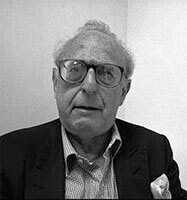Born in Pittsburgh, Pennsylvania, Burt Glinn served in the United States Army between 1943 and 1946 before studying literature at Harvard University where he edited and photographed for the Harvard Crimson college newspaper. From 1949 to 1950, Glinn worked for Life magazine before becoming a freelancer. Glinn became an associate member of Magnum in 1951 along with Eve Arnold and Dennis Stock - the first Americans to join the young photo agency - and a full member in 1954. He made his mark with spectacular color series on the South Seas. Japan, Russia, Mexico and California. In 1959 he received the Mathew Brady Award for Magazine Photographer of the Year from the University of Missouri. In collaboration with the writer Laurens van der Post, Glinn published A Portrait of All the Russias and A Portrait of Japan. His reportages have appeared in Esquire, Geo, Travel and Leisure, Fortune, Life and Paris-Match. He has covered the Sinai War, the US Marine invasion of Lebanon and Fidel Castro's takeover of Cuba. In the 1990's he completed an extensive photo essay on the topic of medical science. Versatile and technically brilliant, Glinn was one of Magnum's great corporate and advertising photographers. He received numerous awards for his editorial and commercial photography, including the Best Book of Photographic Reporting from Abroad from the Overseas Press Club and the Best Print Ad of the Year from the Art Directors Club of New York. Glinn served as president of ASMP from 1980 - 1981. Between 1972 and 1975 he was president of Magnum, and was re-elected to the post in 1987. In 1981, Burt married Elena Prohaska and their son Samuel Pierson Glinn was born in 1982.
Source: burtglinn.com
